Random Wire 155: New antennas, new radio, new eyeball card. Apple computers arrived and working on my home server. Getting the AnyTone AT-D878UVII Plus up and running.
October 31, 2025: This Halloween edition of the Random Wire finds me playing with new antennas, working with two new radios, and adapting to some new-to-me computers.
Update your Hamspot 5 for M17
On October 3, 2025, I covered the new Hamspot 5, an MMDVM hotspot built around a Raspberry Pi 5 single board computer by Collin K0NNK at a great price.
It turns out that the Hamspot 5 that I received is not running the latest firmware for the MMDVM modem board. The newer firmware is needed for the Hamspot to work with M17.
Upgrading means jumpering the two pads on JP1 on the modem board (you can simply add a blob of solder to connect them), then use WPSD to update the modem firmware. I confirmed this with the user who reported it and directly with Collin K0NNK. Collin sent along the image below (note the black box he drew around JP1 in the lower right corner).
After soldering and updating firmware, it is not necessary to undo the jumpered pads. You can simply leave them be.
I’ve been too tired at night to make this change but I will as soon as I can catch up on my sleep!
Short Stack
Easy file transfers with PairDrop
I recently discovered PairDrop:
If you’re on the same network, open pairdrop.net on both computers and drop a file on one to send it instantly to the other. I discovered you can also permanently link two computers. This has been handy for me with some of my remote Tailscale-connected devices. The best part (besides that this is free) is that it is cross platform: if you can open a browser, you can transfer files with PairDrop.
I renewed my .radio domain name
I wonder: is a .radio domain name with my callsign the ultimate vanity URL? I suppose so! I had previously registered kj7t.radio at https://register.radio/ and this week noted it was due for renewal on October 30, 2025…so I did renew it. The registration cost is a bit higher than for your usual .com/org/net domain name, but it includes a profile page you can customize. Instead of a profile page, I chose to redirect my https://kj7t.radio domain to https://www.randomwire.us/. I don’t know if I’ll keep kj7t.radio over the long term, but I like having it.
Right now, the two domains I’m most attached to are https://tomsalzer.com and https://www.randomwire.us/. My plan for the tomsalzer.com site is to transition it to a static site generator, but that has been set on the back burner while I advocate for my wife’s medical care.
You might not be aware that there are many static site generator engines/systems. See https://jamstack.org/generators/ for a long list, if interested. The default view is in order of number of installations, from highest to lowest. Right now, I’m leaning toward using Hugo. One of the reasons I’m improving my home server is to be able to test Hugo at home to make sure I’m happy with how it works.
New: M0CVO Antennas Magitenna
About a month ago, I ordered a limited space antenna from an eBay seller. It arrived as Random Wire 154 was published.
I wanted an easily deployed multi-band wire antenna that might work with the internal antenna tuner on my Yaesu FT-450D. I’m hoping this one works well enough for portable ops.
The easy fix for limited space. Only 7.6m in length this wire antenna with the special matching unit will work on 40m to 6m with the internal ATU found in most modern radios and 80m & 60m with an external ATU. This antenna will handle 400W CW or 550W PEP.
It ended up being more expensive than I expected, what with shipping, import charges, tax, and import fees. The total was 99.34 British pounds or US $139.10.
I tried to take the back off the balun box but the machine screws were overtightened. The heads on two of them sheared off when I tried to unscrew them so I stopped. I was really wanting to see inside to assess the quality of the construction.
New: 2M/70cm COMPACtenna
I’ve been driving around with my antenna swiveled down, simply because it is disruptive to other drivers when I stop to lay the antenna down when I’m going into the hospital parking garage, and later stop to raise it when I’m leaving. Surprisingly, even with the antenna laying flat, I can still hear quite a few QSOs on the various frequencies programmed into my FTM-300DR. I won’t transmit with the antenna laying flat, though, so all I do is listen.
My current antenna is a Comet SBB-2, a fairly compact 2M/70cm antenna with a UHF mount. I used a Diamond K515 Luggage Rack Mount on a cargo bar to place it on top of the truck. The very small RG-316 coax is routed down a side seam on the truck and into the backseat area by passing it underneath one of the cab doors, secured with a bit of Gorilla tape. The main body of the Yaesu FTM-300DR is attached to a Molle Seat Back Panel (affiliate link) with industrial-grade hook-and-loop fasteners. The front panel of the radio rests in an opening in my dashboard. A small Icom speaker (affiliate link) is strapped to the back of my headrest, bringing the audio close to my ears.)
I do want to participate in QSOs, so I have opted for a 2M/70cm COMPACtenna and a Larson NMO mag-mount, both from Ham Radio Outlet. The minimum clearance in the parking garage is 7 feet and this combination, when placed on the roof of the pickup cab, is just under 7 feet from ground level. It should be fine. If it scrapes, I’ll compromise by putting it on the hood of the truck.
I’m thinking that I may not notice much of a difference between the Comet and the COMPACtenna. The Comet tends to “picket fence” when I’m driving above 45 miles an hour. Also, I’m sure I get some signal loss—particularly in the 70cm band—because of the tiny RG-316 coax. The COMPACtenna isn’t going to move around in the wind like the Comet does. It will be mounted to a Larson mag-mount that uses larger RG-58 coax with presumably less loss than the RG-316, so perhaps these pluses and minuses will all cancel out.
UPDATE: The antenna and mag-mount arrived on Wednesday afternoon. I immediately assembled the package and stuck it on the roof of the pickup truck. With limited testing, it seems to be working well. I’m picking up analog and digital traffic about the same as with the Comet antenna. An inaccurate test was enabling APRS on the Yaesu FTM-300DR while parked on the top floor of the hospital parking garage in Tacoma, Washington. I haven’t seen the radio light up like that in a very long while!
Here’s my return trip from the hospital to the Lake House, showing my APRS track with the Yaesu FTM-300DR transceiver and the COMPACtenna:
So far, I’m guardedly optimistic about the COMPACtenna. The QSOs I heard yesterday morning while I drove were at the edge of that repeater’s coverage. I didn’t detect any difference, compared to when I used the Comet antenna. The real test, then, will be transmitting. I’ll give that a try soon.
New: Radtel RT-4D DMR/Analog radio
I was using the DVMEGACast to listen to a net on the Kansas City Wide network a few nights ago and one signal came booming in. The person was using a Radtel RT-4D DMR radio and the audio was very hot. That’s not what impressed me, though. What caught my ear was how clear the audio was.
The Radtel RT-4D is available overnight on Amazon so I pulled the trigger on one for $50. I’ll have the AnyTone AT-D878UVII Plus (affiliate link) for general DMR use, and plan to use the Radtel RT-4D with a couple of my hotspots.
Radtel RT-4D DMR Radio 1024 Channels Walkie Talkie, Dual Band Dual Mode Analog/Digital Two Way Radio, Dual Time Slot Tier 1+2, Ham Radio UHF VHF Spectrum (affiliate link)
I’m a fan of USB-C charging so I was pleased to see this in the manual: “The RT-4D radio can be charged using the included desktop charger or directly via the USB-C port.” The USB-C port is on the side of the radio under a weather flap. This means you can’t charge the battery separately from the radio body.
What I’m not a fan of is the latest CPS software because it won’t install on my Windows Surface 7 laptop. That’s probably because my laptop uses an ARM CPU, not an Intel CPU…but the CPS for the AnyTone AT-D878UVII Plus installed on it. +1 for AnyTone.
New: Eyeball card from KB3IFH
Just before my spouse had a medical incident in May, I had been working with Randy KB3IFH of KB3IFH QSL Cards on an “eyeball card.” What is this? It’s a business-card sized piece that identifies me and explains a little bit about ham radio.
People see the antenna on my pickup truck and ask me about it. Or I pull up to the coffee stand window or fast food window while a QSO is happening and they hear it and ask about it. My new eyeball card has very basic information about me on the front and a brief amateur radio explainer on the back. I’ll carry a stack of these in the truck for those times when people (usually much younger people!) ask me about the radio and antenna.
I tried to keep the information as high-level as possible while still providing something meaningful to those who ask me questions. Will it catalyze someone to become a radio amateur? I don’t know. Undoubtedly, the conversion rate will be very low, but if one person out of a hundred follows through, I’ll consider this successful.
Here’s the draft that I approved for printing (front and back views):
What do you think? Is this worth the effort? What do you say to people who ask you about your amateur radio activities and gear?
Update: Apple computers
All of the hullabaloo about the cessation of Windows 10 support has caused me to make some changes in my computing stack.
First, I went ahead and upgraded all of my Windows 10 machines that were upgradeable.
Second, I’m evaluating various Linux distributions because my home server is not upgradeable due to it’s Xeon CPU. (I’m leaning toward installing Proxmox on it.)
And third, some of my daily drivers are going to be the two Apple computers I just bought.
Why Apple computers?
I’m such a hypocrite. I’ve railed against vendor lock-in for years. Why buy a computer that depends on a single vendor? That just goes against my grain. I crave flexibility, so it makes no sense for me to spend money on an ecosystem that is locked to one vendor.
But…given the ever-expanding threats against Windows platforms, I decided I should try to be more flexible. More accurately, I should become more diverse in my technology stack. I’ll still have Windows computers, and Linux computers, and now I’m adding some Apple computers.
The MacBook Pro is a popular platform so I’m certain I can get service in my area if needed. I could have made the move to a Linux laptop (and indeed, I have done so with a MacBook Air that now runs Zorin OS 18 Pro, and that test seems to be going well) but the ease of using a well-integrated system like what Apple offers means the devices are perhaps more likely to be usable over time for me. Nothing against Linux at all, but I’m more certain about usability with the Apple ecosystem.
Apple iMac all-in-one
I picked up an Apple iMac 2020 All in One i9-10910 3.6GHz 32GB RAM 512GB SSD Radeon Pro 5500XT for the 27-inch screen (5120‑by‑2880 resolution with support for one billion colors!). It is running macOS “Tahoe” which was announced in June of this year, so it’s as modern as I can get on this platform. The i9-10910 CPU has 10 cores and 20 threads so this should be one of my faster computers.
The package I bought includes the proper Apple keyboard and mouse for the iMac.
Why an all-in-one, especially since I’ve resisted this in all of my years of working with computers? It turns out I like having a big screen. I also like the idea of less clutter on my desk (I’m already certain this will be a New Years resolution for me). I’m finding that I am leaning toward a cleaner, more elegant look to my workspace, and the all-in-one iMac will certainly fit that aesthetic.
UPDATE: UPS says they delivered it but there is no photographic proof of delivery. They may have delivered the computer, but not to me. Somebody just got a nice pre-loved iMac. I contacted the eBay seller who confirmed it was shipped to an address different than what I supplied when ordering. Sounds like the shipping department mangled the label. A refund was issued and I subsequently purchased a different iMac that will require some additional RAM.
Apple MacBook Pro
To go along with the iMac, I also bought a 16-inch MacBook Pro 512GB SSD 32GB RAM 2.6GHz i7 2019/2020 laptop, also running macOS “Tahoe.” It’s a little bigger laptop than I prefer. I generally like small, lightweight laptops, but I also like a good amount of screen real estate. For travel where I have to walk some distance, I’ll take a lightweight laptop. For other travel where I’ll be spending a lot of time at a desk or table, I may take the MacBook.
This is the Space Gray model, which I prefer over the brighter Silver model.
Specs and the user guide are available on the Apple support page at https://support.apple.com/en-us/111932.
UPDATE: The MacBook arrived and it’s in fantastic condition. I don’t see any dings, scratches, or marks. I’ve booted it up and used it for a few hours. The Retina display is pretty amazing. However, there is a “service battery” notice. I did reset that but the service battery warning came back. Looks like I’ll be ordering a battery replacement kit and having a go at replacing the battery myself. This is made more complicated because the battery is glued in.
RAM upgrades
As I waited for these to arrive, I started looking at RAM upgrades, because I intend to keep these computing platforms for at least a couple of years. If they are really going to see daily use, additional RAM on board will improve usability. Unlike some earlier models of the MacBook Pro, the 2020-era laptop I’m getting has soldered RAM, so 32 Gb is what I’m stuck with.
However, I was careful to order an iMac with the removable port on the back of the monitor. This signifies the RAM chips are upgradable. This particular iMac can have up to 128 Gb of RAM in four banks, but until I receive the machine, I won’t be sure how the 32 Gb of installed RAM is configured. Will it be two 16 Gb RAM sticks? Four 8 Gb sticks? With two 16 Gb sticks, I can buy a 32 Gb kit with two 16 Gb sticks and fill up all four banks for a total of 64 Gb of RAM. This is what I’m hoping to do.
RAM prices are rising
Unfortunately, prices for DDR4 and DDR5 RAM are rapidly increasing because of the demand for RAM memory for AI data centers. From PCMag:
In fact, prices for SSDs, RAM, and HDDs are increasing due to the demands of AI data centers. Graphs at PCPartPicker show the increases are especially notable for DDR5 RAM. The Memory Guy noted in June that prices have been surging since March.
This might put a crimp in my plan to bump up the memory in the iMac. If I replaced everything on board with a 128 Gb kit, it would cost about $500. That wouldn’t be worth it. I hope I can get by with a smaller kit.
On the other hand, right now may be the best time to buy additional RAM, before prices rise even more!
I’ll update this section once the Apple computers arrive. They are both pre-owned so there will be some imperfections.
Update: Home server
Well, I got the Windows 10 server (a ThinkStation P510) running again. It just required me to hook up a monitor, keyboard, and mouse to authenticate as it booted up.
I installed Ubuntu Server on this machine. First, I shrunk the Windows partition to create space, then formatted the newly created space as NTFS. When Ubuntu installed, it reformatted the NTFS volume as EXT4. I can dual-boot the machine, but the default boot started Ubuntu.
I need to install Samba but I’m considering installing Webmin to provide an easier, more attractive way to manage the server. I think Webmin would encourage me to more actively manage it, compared to a purely terminal window approach.
I believe the Uncomplicated Firewall is build into Ubuntu Server so I may only need to enable and configure it to lock down the server. Since I’ll also have SSH enabled, I’ll also install Fail2Ban.
To prepare for this, I found ten good references and pasted those into a new Google NotebookLM notebook, then asked several questions in the NotebookLM chat. The AI engine uses the resources I linked to find the answers to my questions. That has proved to be very helpful. I was also able to save that set of references and my questions and AI responses, so it’s easy to go back and add to it and ask new questions.
Update: AnyTone AT-D878UVII Plus programming
TL;DR: Getting a brand new AnyTone AT-D878UVII Plus configured is not very intuitive.
To get started, I needed to set the time zone, the date and time, and the DMR ID.
To set the time zone: On the radio, go to Menu —> Settings —> Radio Set —> Other Func —> Time Zone. Use the up/down rocker to select the correct time offset from UTC, then press Select to set the offset.
To set the date and time: On the radio, go to Menu —> Settings —> Radio Set —> Other Func —> Time Zone. Use the channel selector knob to change the year, then press the P1 key to advance to the next field. Press Confirm when done.
To set your DMR ID and call sign: On the radio, go to Menu —> Settings —> Channel Set —> Radio ID —> Edit ID to enter your DMR ID and your call sign. When entering your call sign, use the # key to change from capital letters to numbers, and from numbers to lower case letters.
Then it got more complicated. I updated the firmware successfully. And then I spent a couple of hours trying to import a big codeplug from the PNWDigital group but kept getting errors. What I eventually (three hours later!) did was re-initialize the radio (factory reset), then removed the AnyTone CPS software I had installed, rebooted, then installed the latest CPS software. Then rebooted again. Then updated the firmware again. And rebooted again.
Satisfied that the radio was “clean” and up to date, I loaded the big codeplug into the AnyTone CPS and exported it as CSV files, with the list of CSV files saved in a LST file. Then I imported the LST. And finally, I was able to write to the radio without generating errors.
Now I have to learn how to navigate the talk groups and contacts. I reached out to my cousin Greg AC7RX for some guidance on this, and to a local club member (Steve N9VW) for help. I’m lucky to have hams near me that are deeply knowledgeable about DMR, because I have to say DMR still seems entirely illogical to me. I know there is structure to it but it hasn’t resonated with my brain yet. I’m sure it will, and at that point, I’ll slap my forehead and wonder how I made it so confusing. Getting started with DMR, though, does not feel intuitive or natural.
Closing
We had a significant windstorm come blasting through the Pacific Northwest, USA, last weekend. The ground was already wet and the deluge of rainfall saturated the soil. The combination of softened ground, high winds (77 MPH recorded on the coast!), and very tall trees meant lots of people lost power from downed power lines.
When I saw our power at the Lake House started to flicker on Saturday night, I shut down all of my hotspots and nodes…and that’s when I said to myself: Thomas, you have too many of these devices! The problem is I like each one. I really should think about giving a few away. Maybe that’s another New Year’s resolution in the making.
Most of this newsletter was written while I sat in an uncomfortable chair in my wife’s hospital room, using the rolling meal tray as my work surface. It drops down to just about desk height, and it raises to standing desk height. I like this system so much I bought a sit-stand desk I could roll around at home. That makes it convenient to be in the room with my wife and still get work done, or move to a place where I like the lighting better.
This device has worked well for me but it arrived with the handle of the tilt lever broken off. The missing bit was not in the box, indicating it happened during or before packing. I can’t really recommend this particular device to you because the vendor said they could not procure a replacement for the lever. Instead, they refunded part of the purchase price. (Would I buy it again? Yes, I probably would because it has been a solid work surface and folks down to a more compact size I can stuff into a corner.) What did I do? I bought a Chuckit! dog ball, cut a slit in it, and jammed that on the broken lever. That worked. Our Corgi mix was happy to get the extra ball.
Chuckit! Ultra Ball Dog Toy, Balls for Dogs to Fetch, Durable Rubber, Small 2-inch, Pack of 2 (affiliate link)
My wife has shown more improvement this week: moving around in the bed, tracking people with her eyes, and responding with eye blinks and words that were mostly understandable. Occasionally, a clear word or phrase emerged. These are signs her brain is finding new pathways around the areas damaged by the hemorrhage. Her nasal feeding tube—a temporary adjunct for nutrition and hydration—was replaced with a gastronomy tube (G-tube, or technically, a PEG). I’m hopeful that her ability to swallow will return as her ability to speak improves. Time will tell.
I truly appreciate the emails many of you have sent. With our parents having walked on before us, we’re now the senior generation in our family. I don’t have Mom and Dad to turn to anymore. It’s rather lonely to be sitting in her hospital room, day after day, while the rest of the world moves along without us. Your messages help me feel less alone. Thank you.
Remember to touch a radio every day! 73,



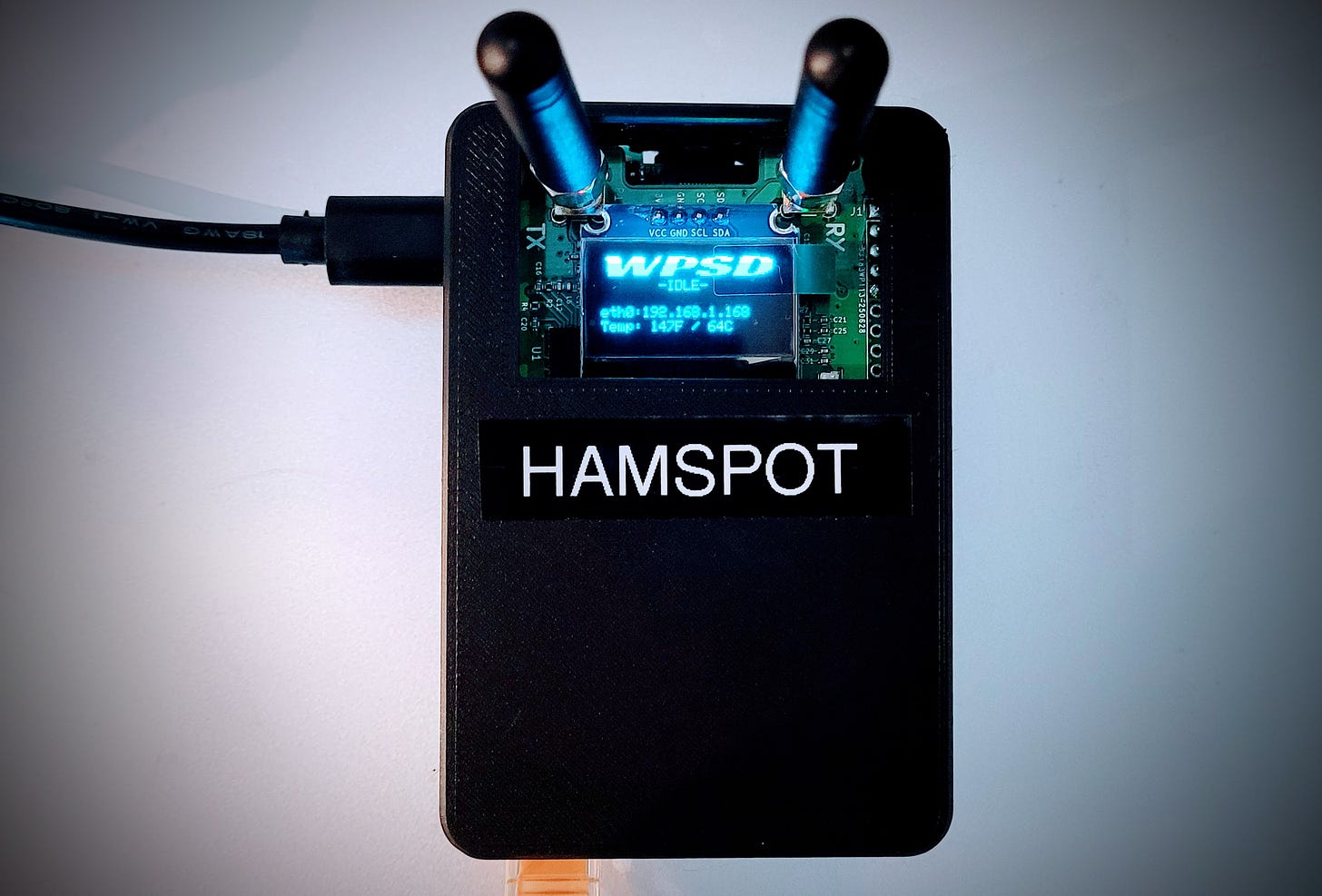
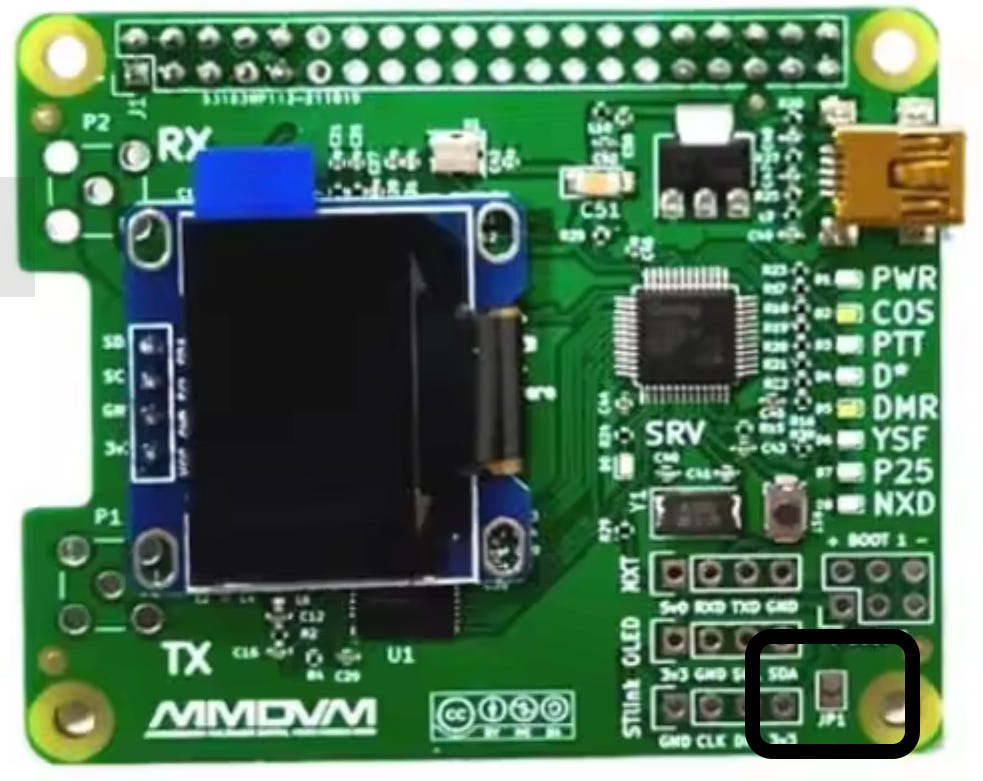

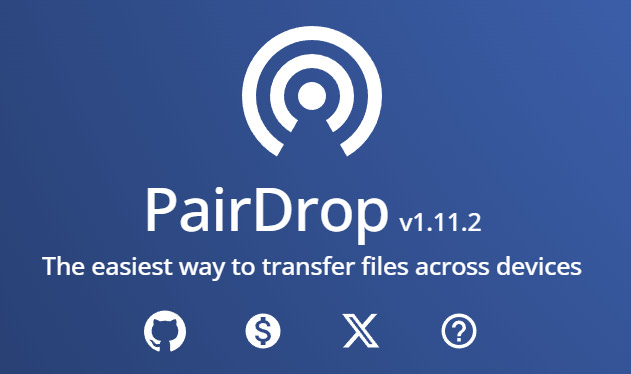
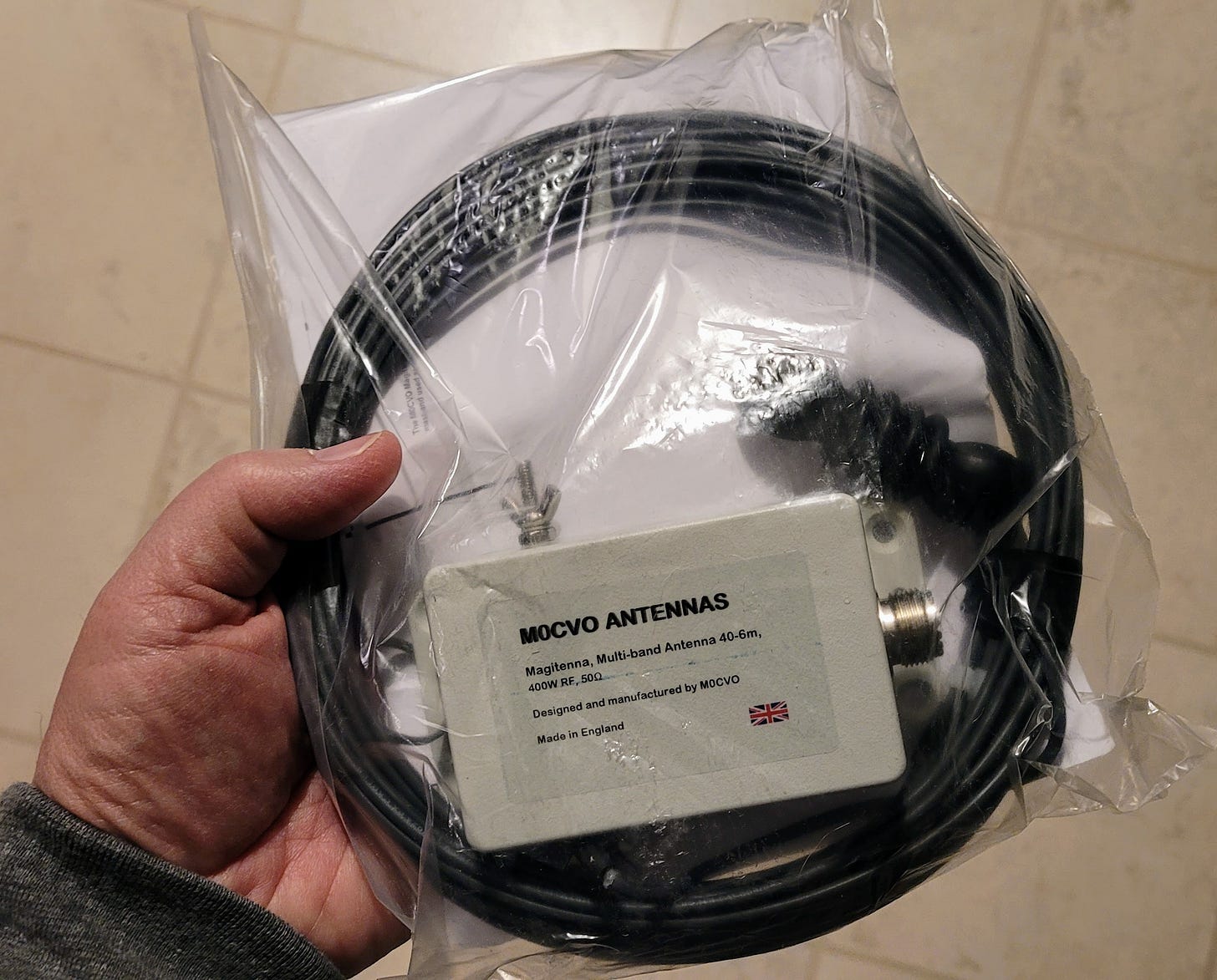
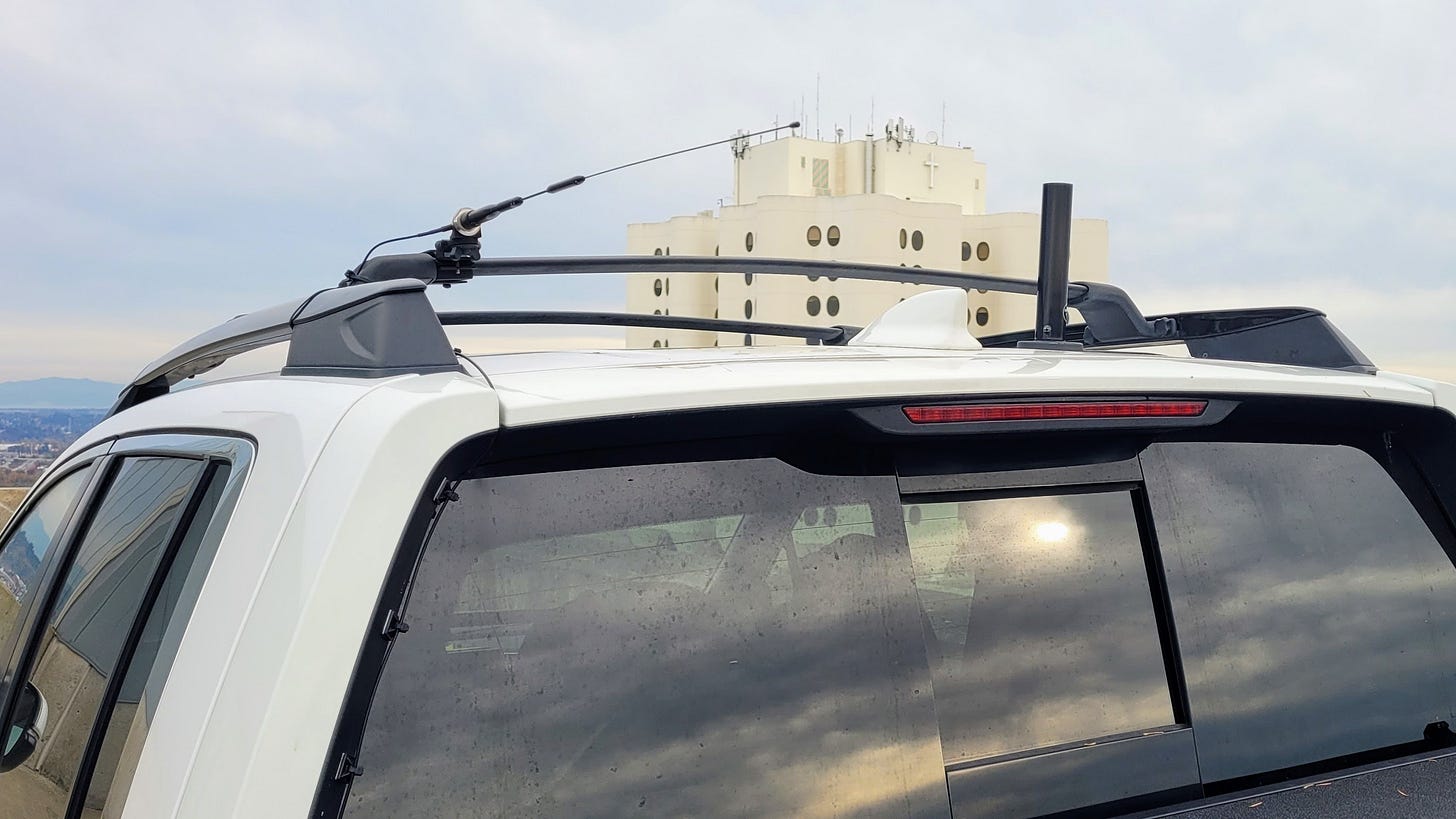
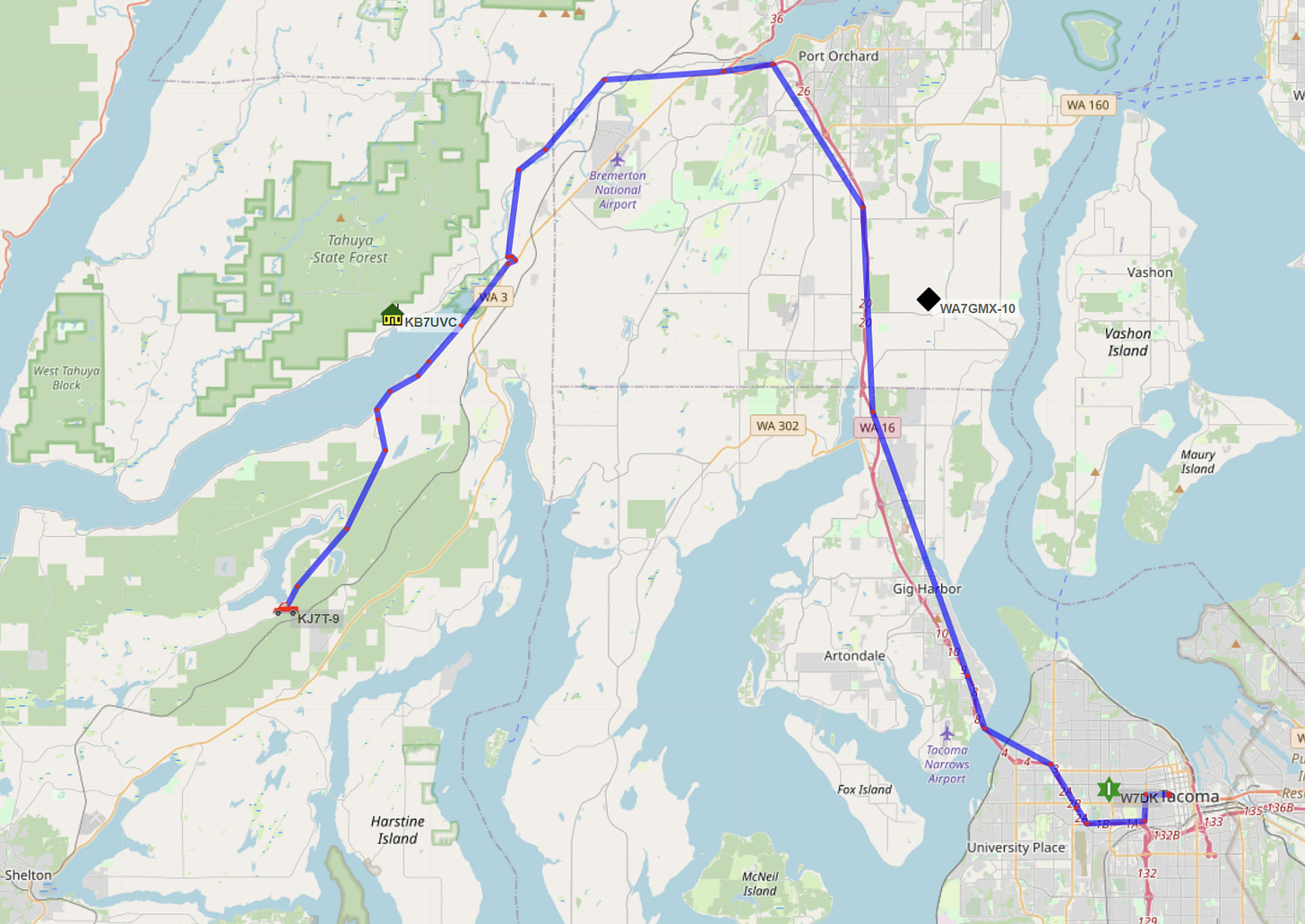
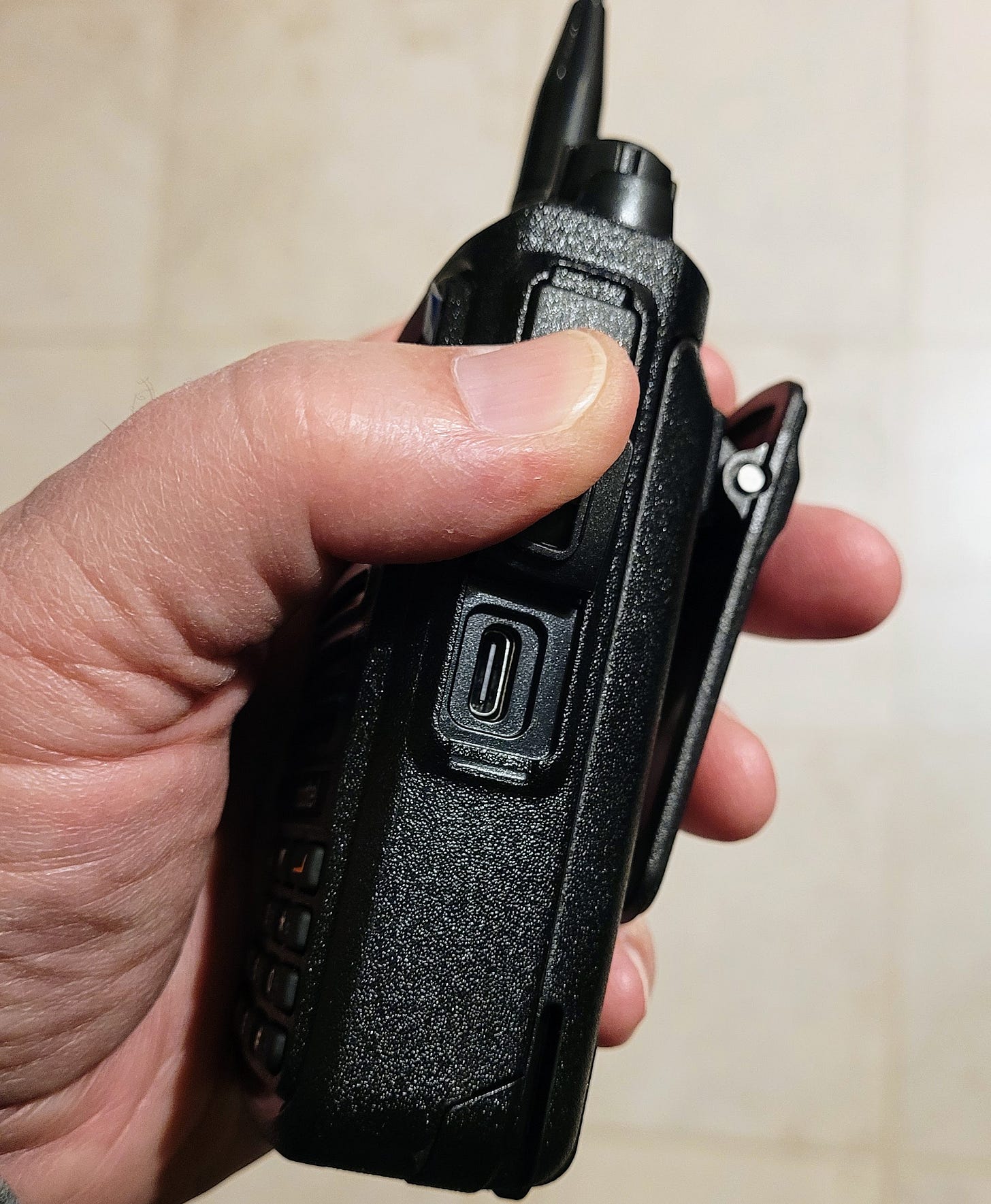

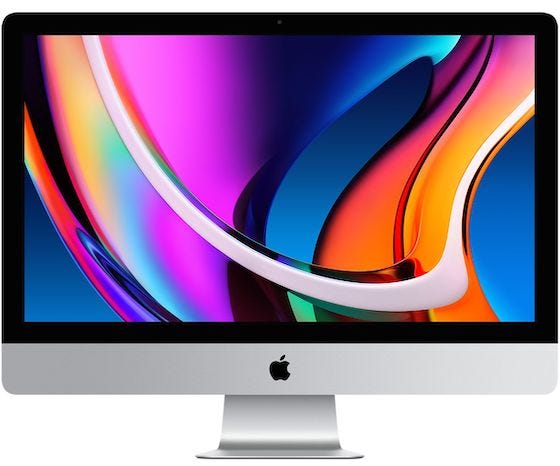
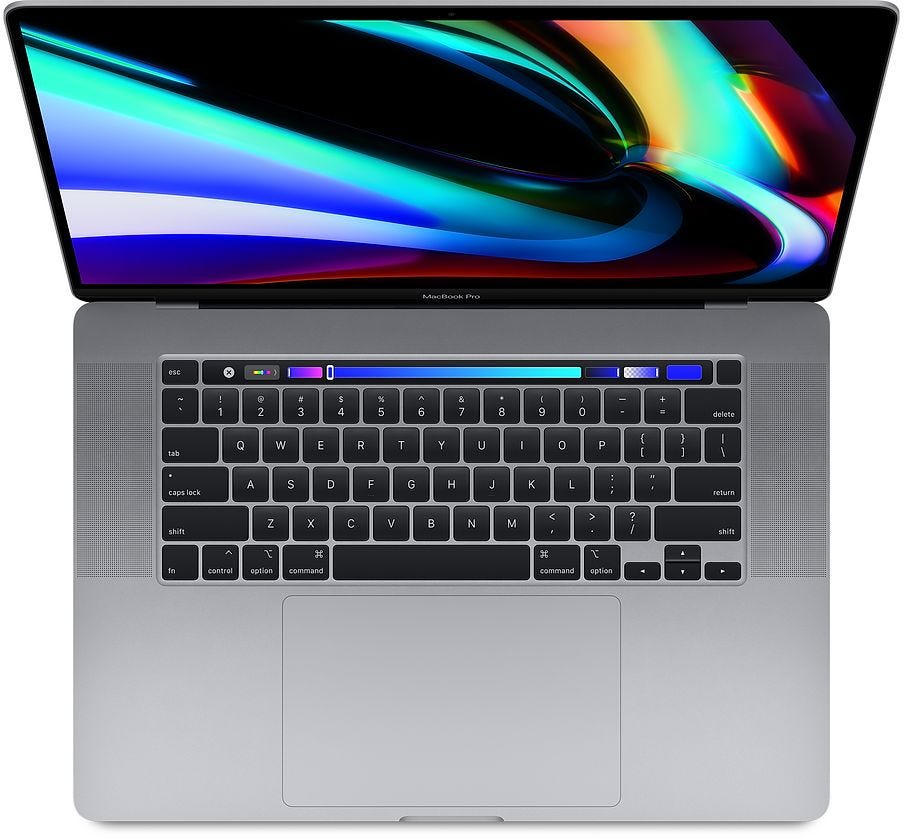

Hi Tom!
Well, I've got w7com.com and w7com.org. Those, and my two dozen other domains all forward to the same gmail account (nethead@gmail.com) My first domain was nethead.com which I got back in '95 because Jon Postel told me I missed deadhead.com by two weeks. The web all points to thisoldhost.com, a VM on Digital Oceans which has been up almost 7 years without a reboot.
5:23PM up 2483 days, 17:15, 2 users, load averages: 0.20, 0.20, 0.20
I've got a 2017 i7 version of that iMac as my daily driver. I just love the screen so much that I can't see myself changing. Not so sure about MacOS, but at least it has a decent BSD style command line. I put in 72GB of RAM and it runs very nicely. Since $dayjob is herding Windows Servers, it's nice to look at something else when off the clock.
If you want to try VMWare ESXi for the Xeon, drop me a line, I've got some spare old permanent licenses from $dayjob.
Window LTSC might be a nice solution for you on the Windows side. I've been very happy with the installs I've done. https://massgrave.dev/windows_ltsc_links
Anyway, I've got the day off so I'm going to drive out 26 until I hit that great counterpose they call the Pacific Ocean and see what my ATAS-120 and FT-891 can do. Maybe even put out a vertical with a magic carpet if it's not to nasty out.
-73 de Joe w7com